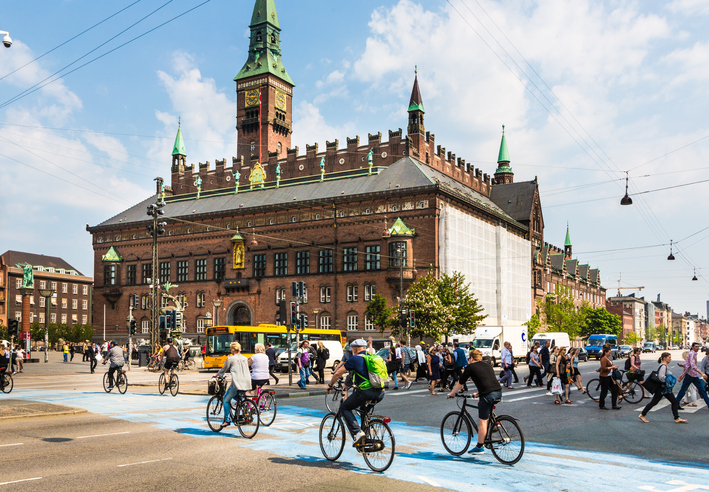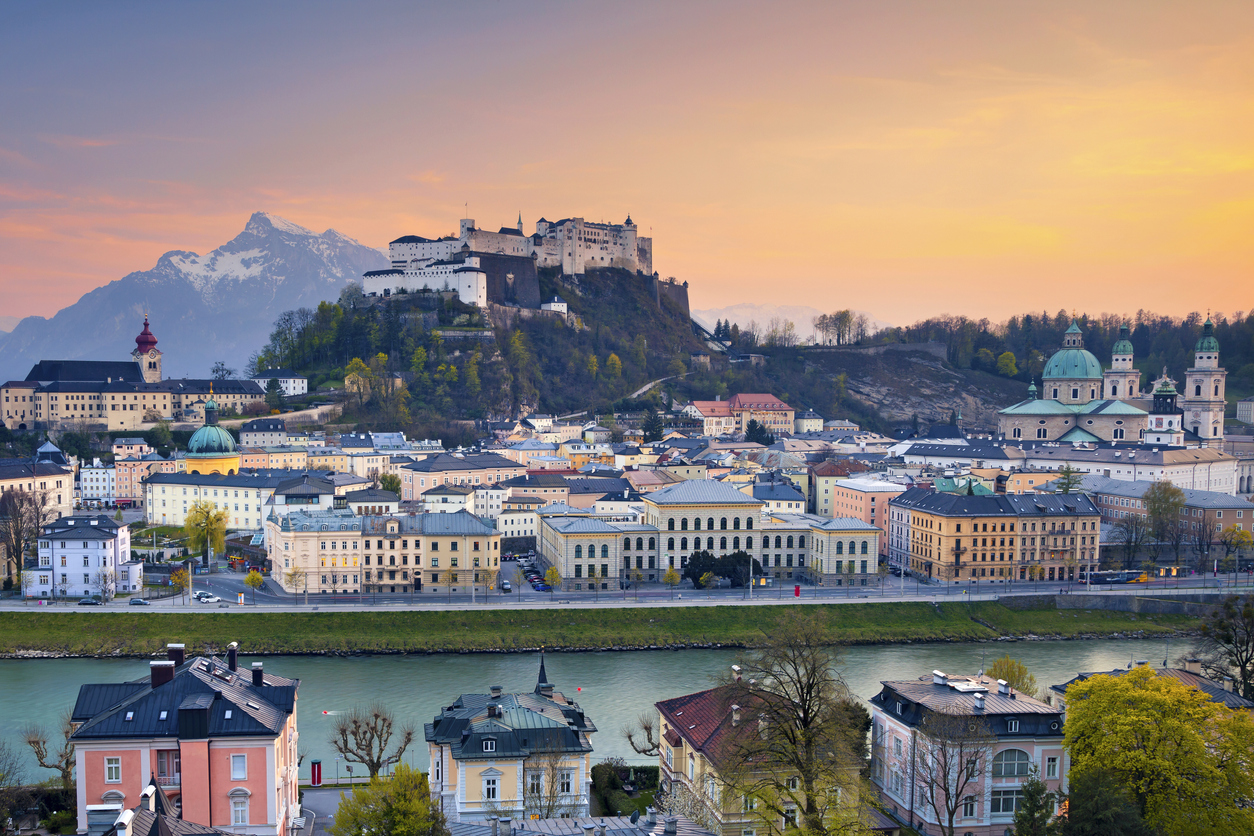Happy citizens make for healthy economies and strong nations. The World Happiness Report examined 156 countries and ranked the happiest countries based on how happy the citizens felt, and the social, urban, and natural environments contributing towards that happiness. Uncertain political situations, low economic development levels, armed conflicts and the threat of war have a deep impact on well-being. Therefore, cities in underdeveloped countries like South Sudan and Haiti rank low on the subjective well-being of individuals. While residents of cities like Helsinki (Finland), Aarhus (Denmark), Copenhagen (Denmark), and Bergen (Norway) evaluated their current lives positively because of factors like high pay and social security.
10 Happiest Countries In The World
1. On The Top With A Strong Will: Finland

Winning the title of the happiest country in the world again, Finland is one of the Nordic countries that keeps topping the report right from 2017. The lower income gap, increased quality of life, low corruption, high life expectancy rates, and work-life balance contribute towards Finns’ happiness. The report also takes into consideration factors like social support, GDP, freedom to make life choices and more that Finland excelled in. Finland’s strong policies like ‘housing first’, which make sure people on the streets get the required support and home make the country different. Their philosophy of sisu, loosely translated to ‘perseverance and determination, the strength of will, and being rational in adverse times’ expresses the Finnish people’s inherent character. Factors like this sustain Finland’s first position. The world’s happiest country also stresses more on experiential learning rather than quantitative testing leading to educational success.
2. Get That Hygge In Your Life: Denmark

Another Nordic country, Denmark is also home to Copenhagen, the happiest city in the world. One of the main reasons for Denmark being among the happiest countries in the world is its welfare model. The model includes paying high taxes, but as a result, they have universal healthcare and pension and social security. The concept of hygge plays a major role in the well-being of the Danish people. Loosely translated to creating a comfortable and cosy atmosphere, hygge helps in relieving stress and staying happy. Many countries have tried to adapt to this lifestyle too.
3. For The People: Switzerland

Switzerland has risen from last year’s sixth position to be the third happiest country in the world. One of the happiest countries, Switzerland has a system of direct democracy that makes the citizens feel involved in every decision the government makes. Most of the policies and rulings are done using referendums and people voting so there is active participation. Swiss punctuality is a famous notion followed not just by the people but also by public transport. They have effective welfare and healthcare programmes that provide basic living costs and health insurance.
4. Quality Tourism And Healthcare: Iceland

One of the happiest countries in the world, Iceland has free healthcare and education. Social support is an important factor in this report and Iceland’s population performs well in the area. Since Iceland is small and most of the population lives close to Reykjavik, it is easy to stay in touch and people rely on each other. In recent years the country has seen a massive inflow of tourists and has recovered from its financial crisis in 2007. The fourth happiest country in the world also has a high life expectancy, good healthcare, and a low infant mortality rate.
5. Socially And Financially Strong: Norway

Even though Norway is described as one of Europe’s top destinations, the country dropped ranks through the years. Norway remains one of the happiest countries in the world because of factors like strong social support, good governance and low corruption rates. The country is safe without many internal conflicts. Norway’s welfare system makes sure that there is low-income inequality. The system also makes the citizens feel secure both socially and financially making the citizens content. The country also has a strong tourism industry because of the Northern Lights.
Also read: What’s The Best Time To See The Northern Lights In Norway?
6. Happy Teenagers Not A Myth: Netherlands

Guardian reported in 2018 that Dutch teenagers are the happiest teenagers in the world. The report went on to say that while teenagers across the world are facing mental health issues, life satisfaction has not dipped in the Netherlands’ teenagers since 2013. Dutch teenagers have a positive and supportive environment at home and school. Also, happiness levels have remained constant in the Netherlands since 2005. The world’s sixth happiest country has a healthy economy, relatively low inequalities and a low unemployment rate.
7. Healthy Work Culture Leads To Healthy Life: Sweden

Rejoining the list of the happiest countries in the world, Sweden has managed to retain its spot from last year. The country is known for its safety and is tolerant of different communities. The Nordic country also places a lot of importance on work-life balance. The work hours are relatively lower than in countries like the US and vacations extending up to five weeks. The hours ensure that there is productivity and contribute to a healthy social life. The people here are less likely to drink during the week which decreases unhealthy dependency on alcohol. According to ‘The New York Times’, new Swedish parents also get 16 months of leave that can be used until the children are 12 years old.
8. Together They Are One: New Zealand

New Zealand’s prime minister Jacinda Ardern in 2019 announced a well-being budget, the first in the world. This budget would deal with issues like climate change, housing, domestic violence, and social exclusion. This contributed to the social support factor of the report. In times of crisis like the earthquake in 2011 and mosque shootings in Christchurch, the community came together to extend their support. Instances like people helping each other to rebuild after the earthquake and Ardern pledging to pay for the funeral costs for the victims of the shooting show community strength.
9. Safe And Secure: Austria

One of the happiest countries in the world, Austria places a lot of importance on personal and child safety. The country also has affordable and quality healthcare, many green outdoor spaces, and accessible education. In a report done by InterNations in 2017 expats found the political conditions of the country were beneficial to them and 96 per cent of the expats feel that the environment is clean and favourable. Austria also ranked high in life expectancy and GDP.
10. High Salaries And Different Cultures: Luxembourg

According to 2015 statistics, 46 per cent of Luxembourg’s population are foreigners leading to diverse communities and nationalities. Among the happiest countries in the world, Luxembourg is also a centre for the Europe Union’s institutions like the European Court of Justice, the European Investment Fund, the Secretariat of the European Parliament and more. One of the richest countries in the world, Luxembourg makes sure that high wages are paid which is why many people work in Luxembourg but do not live there. Social security also takes care of the citizens after retirement.
Happy Environment, Happy Humans
The World Happiness Report also found that the environment majorly affects the happiness levels of people. There are many studies that relate subjective well-being to the environment. People’s feelings and life evaluations were based on things like nature, temperature, air pollution, and noise pollution. Only half of the people who were surveyed were happy with the current efforts towards protecting the environment. If given a chance, 62 per cent of respondents preferred preserving the environment over economic growth. This being said, the road to a sustainable future is long and every one of us must contribute towards it.


